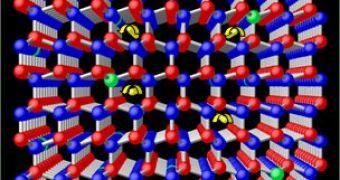A team of researchers have tried a new approach for solving some of the biggest problems in nanotechnology today and came up with a new field that will allow revolutionary advances in computer electronics, among many other areas, by combining the best of both initial fields.
Dr. Abdulhakem Elezzabi, the Canada Research Chair in Ultrafast Photonics and Nano-Optics and an electrical and computer engineering professor at the University of Alberta and his colleagues, combined the working principles of plasmonics and the spintronics technology, thus creating a new branch they called spinplasmonics.
In plasmonics, light signals are sent down the surfaces of small metallic nanostructures. This makes it possible to create light circuits that are much smaller than those that can be made with insulating materials such as glass, the backbone of fiber-optic communications.
"Spintronics" is an emerging field that deals with the use of the 'spin' of an electron for storing, processing and communicating information and it has known important recent advances that may one day manifest themselves in a new generation of smaller, smarter and faster computers, sensors and other applications.
Both fields may be used to create incredibly efficient electron spin-based photonic devices, which in turn may be used to build, for example, computers with extraordinary capacities.
For instance, they have succeeded in overcoming one of the main challenges in plasmonics, a way to propagate light over a long distance through solid materials, by successfully combining plasmonics and spintronics in a way that puts plasmonics in a new light and puts a new spin on spintronics.
Thus, they were able to demonstrate a plasmonically-activated spintronic device that switches light on and off by controlling electron spins, which could eventually be made stable, so that any given result can be maintained indefinitely without the necessity of a power source.
"With the development of this technology I envision a move from semiconductors [silicon chips] to metal based electronics with light-driven circuits," Elezzabi said.

 14 DAY TRIAL //
14 DAY TRIAL //